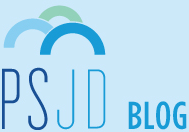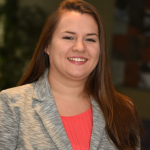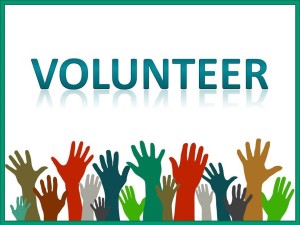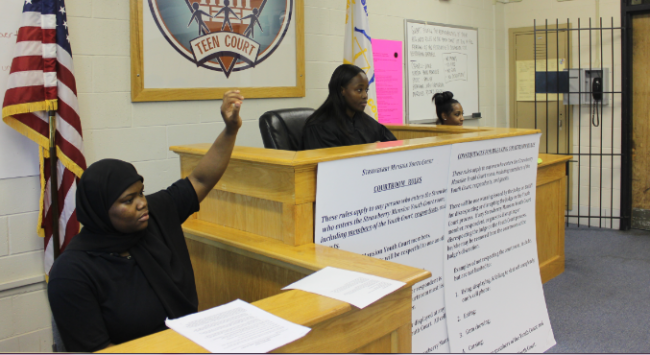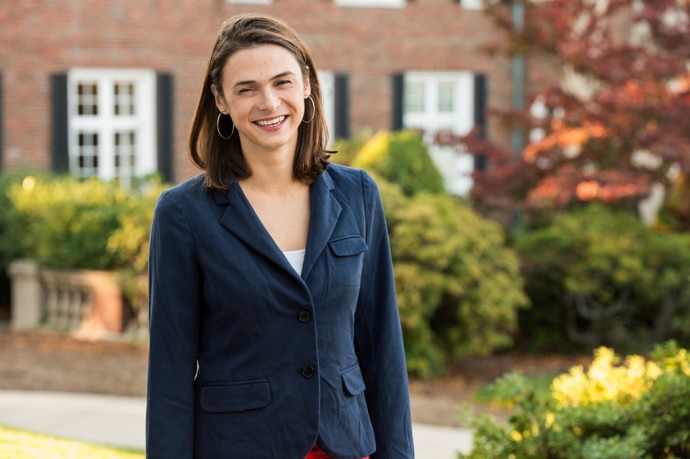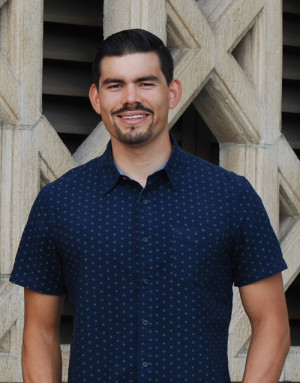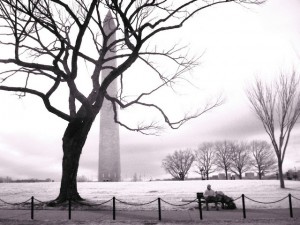Spotlight on Student Public Service & Pro Bono: Prison Abolition for Transgender Liberation
Every year, we honor law student pro bono with the PSJD Pro Bono Publico Award. Any 2L or 3L who attends a PSJD subscriber school and has significant pro bono contributions to underserved populations, the public interest community and legal education is eligible for nomination.
Last week, the PSJD Pro Bono Publico Award Merit Distinction honorees guest blogged about their law student pro bono and their public interest commitments. Today, we’re featuring our 2015-2016 Pro Bono Publico Award Winner and DePaul University College of Law student Lark Mulligan, a multi-talented advocate dedicated to transgender rights.
Prison Abolition for Transgender Liberation
Lark Mulligan, PSJD Pro Bono Publico Award Winner, 2015-2016 (DePaul University College of Law)
I met her in Cook County Jail, where she was awaiting trial for felony charges.[1] A Black transgender woman from Chicago’s south side, our client spent her late teens and early twenties in and out of prison and jail. Incarceration is an especially dangerous and traumatic experience for transgender people because they are almost exclusively housed according to their gender as assigned at birth, meaning that trans women, like my client, are housed in men’s facilities. Like many other incarcerated trans people, she was placed in “protective custody,” a misleading name for what others might call “solitary confinement.” It was a small cell where she sat in isolation and experienced daily threats, harassment, and slurs from correctional staff. While she was in protective custody, jail staff denied her HIV medications, gender-affirming feminine products like bras and makeup, and hormone therapy, which she had been taking as prescribed for over a decade.
Eventually she was convicted, served two years in a men’s prison, and was paroled out on house arrest to an all-men halfway home. Having been kicked out of her mother’s house after coming out as trans as a teenager, she was no stranger to gender-segregated shelters and public housing, and she knew the risks of presenting her true gender in such an environment. After feeling it out for a week, she began presenting more in line with her female gender identity, wearing feminine clothing, makeup, wigs, etc. But she immediately felt unsafe when the other residents and house staff harassed her for her appearance, calling her names, and threatening to sexually assault her.
She tried to get a job so she could move into her own apartment, but everything was working against her. Because of her ankle bracelet, she was only able to leave the house for a few hours every day. She didn’t have a diploma or GED because she dropped out in tenth grade when administrators forced her to use the men’s room, students harassed and attacked her, and teachers would only refer to her as “he”. When she was able to get her foot in the door with an employer, she would bring in her state ID and birth certificate to fill out the new hire paperwork. However, because of an Illinois law that prohibits someone with a felony conviction from changing their legal name until ten years have elapsed since the termination of their sentence,[2] her documents unfortunately still displayed her masculine-sounding former name and identified her as “male.” Employers would take one look those documents, shoot her some strange glances, ask a few invasive questions about her identity and genitalia, and later she would receive a call saying they “decided to go with an internal hire.” When she was finally hired, she was quickly fired after refusing to wear the men’s uniform.
After a few months of struggling, she returned to her halfway house one day to find all of her belongings on the sidewalk. The Illinois Department of Corrections only pays rent for people on parole for three or four months, and her time limit had expired. Because she had nowhere else to live, that evening her ankle bracelet automatically notified her probation officer that she missed curfew, and the next day she was arrested on a warrant for probation violation and taken back to Cook County Jail.
The United States is experiencing an urgent crisis of hyper-policing and mass incarceration of poor people of color, in particular Black people, and the criminal legal system ensnares people in impossible situations. Transgender people of color living in poverty are impacted by these trends in specific ways; over 50% of Black transgender women can expect to be arrested at some point in their lives, and because the world is so gendered and hostile to people who fall outside gender norms, they face numerous barriers to returning to a stable life. One reason trans people are overrepresented in the criminal legal system is that they experience disproportionate rates of poverty and homelessness resulting from barriers to housing, education, and employment. As a result, trans people might commit survival crimes like retail theft, sex work, or trespassing into a building to sleep at night. Without stable housing and under the burden of a criminal record, it is almost impossible to find a job, and the cycle of poverty and incarceration continues.
Even if they are not committing any crimes, the mass media has very effectively taught police, judges, states attorneys, and the rest of us to assume that trans women of color occupying public space are sex workers. Many transgender women of color report being arrested and charged with prostitution while they were simply walking down the street – a phenomenon some have termed “walking while trans.”
Transgender people are also being murdered at staggering rates, with over 21 murders in the U.S. in 2015 alone, the vast majority were women of color, and many of them went uninvestigated. The global average lifespan of a transgender person is around 23 years. By failing to hold anybody accountable for these deaths, the legal system passively condones this violence and the notion that trans people of color are disposable. Further, transgender people who try to defend themselves from racist and transphobic violence, as in the cases of CeCe McDonald and Eisha Love, are often arrested and prosecuted while their attackers go free.
In short, the criminal legal system is not working for transgender people.
To address some of these injustices, in 2008 a group of prison abolitionist activists, social workers, and lawyers founded the Transformative Justice Law Project (TJLP), which provides free holistic legal services and support for trans people who are criminalized in Chicago and throughout prisons in Illinois. Among other things, we currently help trans people change their legal names, advocate for trans prisoners, conduct workshops and trainings, and publish writing and artwork from trans prisoners in our ‘zine publication Hidden Expressions. After moving to Chicago by way of Vermont in 2011, I became a TJLP Collective Member and have worked on various projects ever since.
Since joining TJLP, I have learned that lawyers can only do so much for criminalized trans people caught in an inherently violent, transphobic, and racist system. While lawyers have an important role to play in reducing the harm that the legal system inflicts, I believe that the only long-term solution to mass incarceration is a grassroots movement to abolish the prison-industrial complex.
Prison abolition is a movement to dismantle all systems of incarceration, surveillance, and policing, and to build a world that has no need for prisons or police by eradicating the root causes of violence, inequality, and oppression in our communities. Instead of reacting to violence and conflict with more police and more prisons, which do not make society safer but rather cause more violence and poverty and racism, an abolitionist approach would address the root causes of violence by investing in free public education, community empowerment, reparations, healing and restorative practices, non-punitive drug treatment programs, open dialogue, accessible and affordable healthcare, and food justice. Rather than trying to reform an inherently violent system, like conducting police sensitivity trainings, I think the only way to actually make the world safe and affirming for trans people – and for all people – is to get rid of police and prisons altogether.
Prison abolition does not necessarily mean that I want to walk over to the nearest jail and let everyone out. Instead, abolition means recognizing the ways in which systems of racism and transphobia mutually reinforce and are reinforced by the prison-industrial complex, and then taking steps to eradicate them all. Rather than asking the penological question “what do we do with people who commit crimes,” prison abolitionists ask much more fundamental questions like “why do people commit crimes in the first place?” and “how can we prevent people from causing harm to others?” Prison abolition teaches that people often commit crimes because they are poor and need to survive, or because they are reproducing violence that was done to them in the past; they are trying to survive and cope in an oppressive world that criminalizes their existence, and therefore all systems of oppression must be dismantled in order to prevent harms. In the words of abolitionist Alexander Lee, “The absence of prisons is only one way of describing a society free of systems of inequity – white supremacy, male supremacy and the gender binary, capitalism, ableism, among other things – which produce violence, desperation, hatred, and suffering. Such a society would laugh off the outrageous idea of putting people into cages.”
Working with criminalized transgender people has convinced me of the necessity of prison abolition. In 2010, I started as an intern at TJLP. When friends would ask me what I was doing there, I would say “I’m working with trans people who have been wrongfully convicted.” Over time I saw that the reality of our clients’ lives was much more complicated – that regardless of guilt or innocence or whether someone “actually” committed a crime, their very survival was being policed, punished, and extinguished. Eventually it clicked that the term “wrongfully convicted” assumes that some people deserve to be punished and other people don’t, that guilty people deserve to be in cages and innocent people don’t. While many people are incarcerated for crimes they didn’t commit – particularly in Chicago, the false confession capital – not every trans person is in prison because of police profiling. Yet regardless of what they may have done in the past, none of the people whom I have met in Illinois’ prison system deserve to endure the abuse, isolation, violence, and fundamentally oppressive environment of incarceration.
Seeing the harsh realities of incarceration for transgender people also challenged me to reframe my concept of community safety. The expansion of the prison system is often justified on the grounds of keeping people safe: the state builds new prisons, police are given tanks and assault rifles, neighbors call 911 when they see a “suspicious” person in their neighborhood – all in the name of community safety. While working with trans people in prison, I realized that we rarely think about the safety of people in prisons and jails; are they not also members of a community who also deserve to be safe? But when I tried to think of ways to make prisons safe for trans people – for example, housing trans women in women’s facilities – I realized that, while such reforms might reduce the harm in some ways, they wouldn’t actually help trans people live longer fuller lives, and they wouldn’t stop trans people from being arrested in the first place. Incarceration and contact with the police cannot be a safe experience for trans people because prisons and police are inherently violent, isolating institutions. How can you be safe when you’re locked in a cage, completely subject to the authority of people who hate you? At the end of the day, the safest thing for trans people – and for all people – is to be free from the threat of incarceration and policing altogether.
The current era of mass incarceration requires that we all ask ourselves fundamental questions about safety, punishment, race, gender, and oppression. Given the authority and knowledge that the legal system has granted to lawyers, we all have a responsibility to think critically about how we can contribute to a more just, safe, and affirming world for everyone whom the criminal legal system fails.
Footnotes:
[1] The following story is being shared with permission, and the facts have been modified to protect anonymity.
[2] 735 ILCS 5/21-101 (2007).
Permalink Comments off
